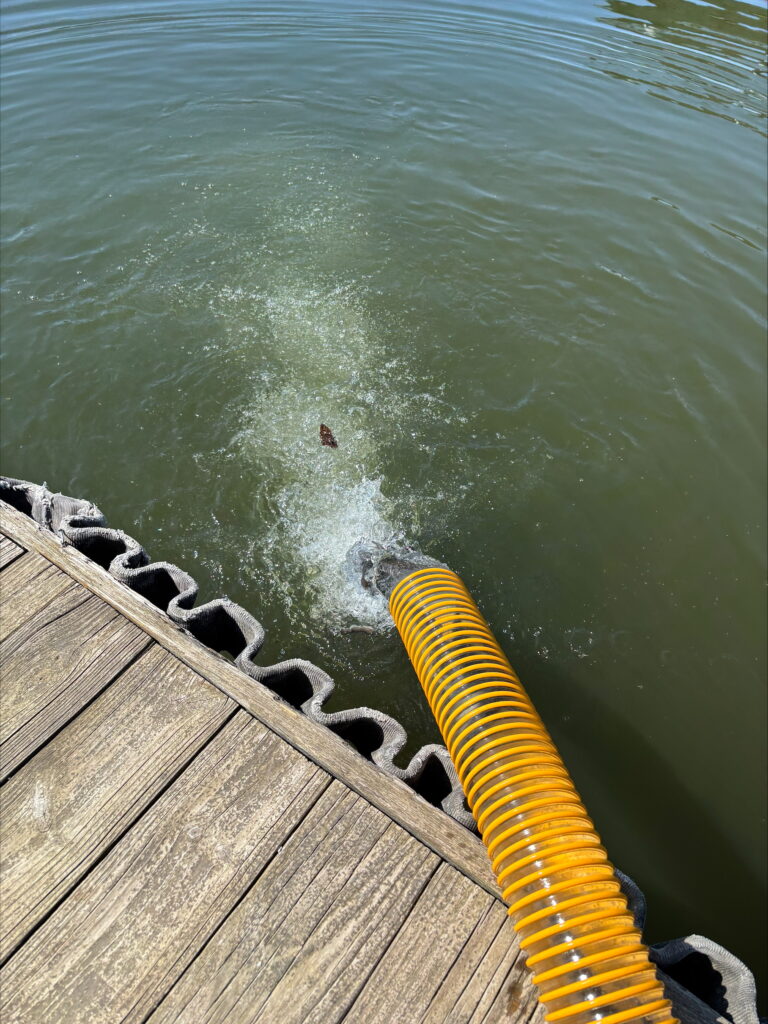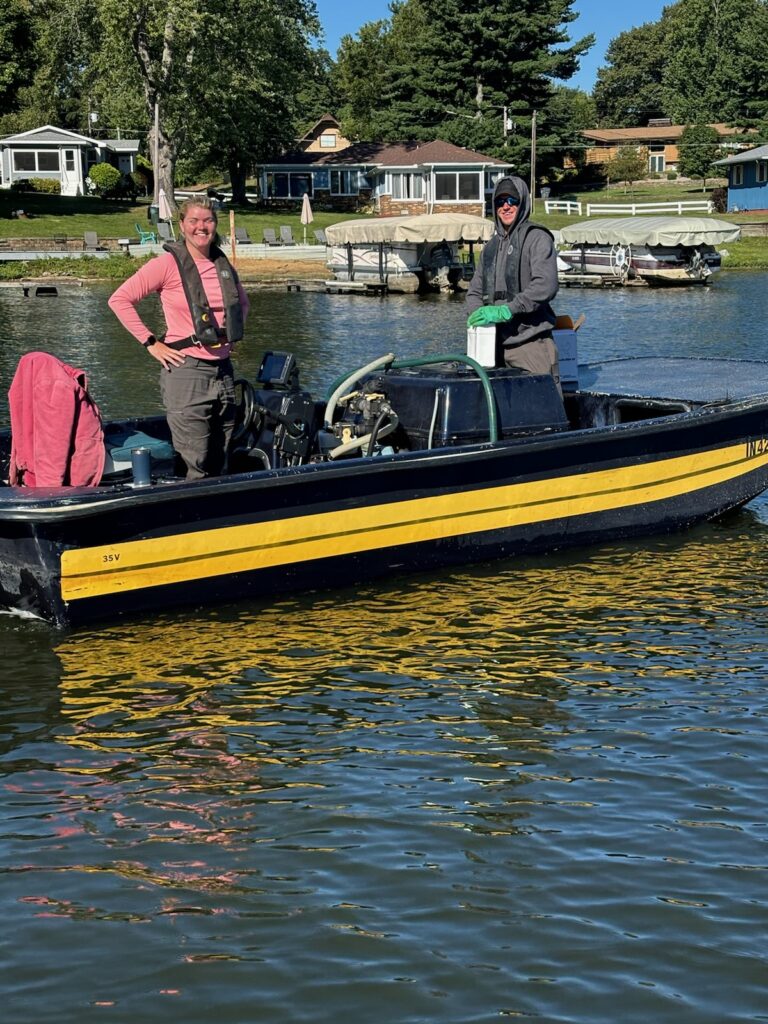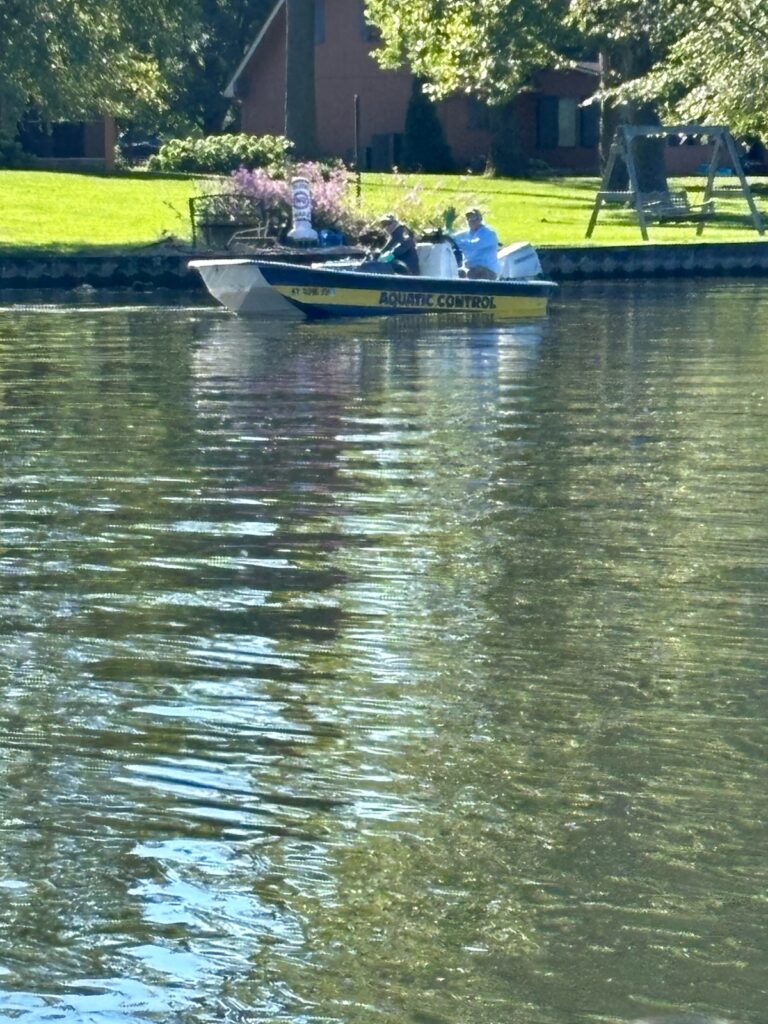Yesterday was a beautiful day to put some fish in the lakes! Thanks to NIPSCO, Herman Brothers Fisheries, and Indiana DNR, we were able to put about 5,400 6-8″ Largemouth Bass into Lake Freeman and Lake Shafer.

Free Fishing Days are on their way!
This year’s Free Fishing Days are May 4, June 7-8, and September 27. On these days, Indiana residents can fish the state’s public waters without a fishing license or trout/salmon stamp. All other rules such as seasons, bag limits, and size limits apply.
Find all you need to know about fishing in Indiana here: Indiana DNR Fish & Wildlife

Dredging Areas for the upcoming 2025 season will include north of 8289 N Kiger Dr on Lake Shafer in Monticello, IN 47960. From there, the dredge will work down-river and hopefully make it near N Barekman Ct. by the end of the season. The dredge being used is a 12-inch dredge, which means that it has a pump with a 12-inch discharge port. It will be removing sediments coming down the Tippecanoe River. Watch for the pipeline and the buoys marking it. The pipeline is transporting the sediments to a disposal site. These projects are occurring within Idle Zones established and enforced by the Indiana Department of Natural Resources. Please respect the Idle Zones.
It is with mixed emotions that we announce the resignation of our Executive Director, Gabrielle Haygood, effective December 13, 2024.
After 20 years of dedicated service, Gabrielle has worked tirelessly with our Staff, Board of Directors, and the local community.
We deeply appreciate Gabrielle’s countless contributions, and wish her and her family the best in their future endeavors.
~Carrie Woodruff, SFLECC President
SFLECC Board of Directors President, Carrie Woodruff, called the meeting to order and welcomed those in attendance. She introduced the Board of Directors and went over what the SFLECC has been doing over the past year.
Carrie Woodruff then introduced the seven candidates for the five available Director positions: Rick Stetler (incumbent); Jack Werner (incumbent); Greg Deitz; John Engler; Darin Griesey; Ed Lucy; Rick Sweet. Voting took place throughout the meeting and ballots were collected at the end.
In lieu of Treasurer Tracey Linder’s absence, Carrie Woodruff presented the financial state of the organization. She reported that finances were within the projected budgets for operations and dredging. Operations revenue was at 103% of the budget at the end of July and operations expenses were at 49%. On the dredging side, expenses were at 40% through July.
Up next, Executive Director Gabrielle Haygood thanked all who came to the meeting and introduced the board and the staff. She proceeded to inform the attendees of all SFLECC has been doing this year. In April, SFLECC stocked fish and installed some fish habitats in both lakes. In May, SFLECC bought a new-to-us office building/meeting room/garage and moved to it. She talked about dredging, updating equipment, and maintaining the retention ponds, and how the flooding in July set back the dredging schedule greatly. Since then, the cleanup crew has been in overdrive with all the logs and debris that came down from the river. There has also been an invasive aquatic plant species called Eurasian Milfoil found on Lake Shafer and Aquatic Control Inc out of Valparaiso will be spraying the weed on September 4, 2024.
Land Manager Owen Lovvorn then talked about the Cleanup Crew and the debris that has been collected this year. He then discussed the Shore Front construction happening on the lakes.
At this point, Carrie Woodruff thanked the board for their volunteer service and presented Director & Secretary Marie Green with a gift for her many years of dedication to the SFLECC.
After a period of questions and answers, the meeting was adjourned.
Votes were then counted. Incumbent Jack Werner was voted back on the board, along with new board member Greg Deitz. John Engler, Ed Lucy, and Rick Sweet will also be returning to the board.
*After the September Board Meeting, here is the new lineup of the Board of Directors for 2024-25: President-Carrie Woodruff, Vice President-John Engler, Secretary-Mike Triplett, Treasurer-Tracey Linder, Scott Bechtel, Greg Deitz, Bob Dion, Steve Haines, Dave Hardy, Lindy Karberg, Ed Lucy, Steve Pollack, Joel Stiller, Rick Sweet, Jack Werner.
Aquatic Control, Inc. will be spray-treating areas of Lake Shafer for Eurasian Milfoil tomorrow, September 4th, starting at 7 a.m. They will have two boats going – one boat will be starting upstream and one boat in the southern treatment zones – both working their way back to the launch at Big Monon Camp. It is recommended to limit boat traffic in the treated areas and to turn off lake-drawn irrigation systems for 3 days.

More detailed maps of the areas that will be treated for Eurasian Milfoil on Wednesday, September 4, 2024, starting from the PJ’s Gas Station area and going downriver. These maps do overlap but are more specific than the overall map posted previously. Aquatic Control, Inc has posted signs near all the areas that will be treated next week.








On August 22nd, 2024, at 7 pm in the SFLECC Office, the Board of Directors met to discuss the treatment of Eurasian Milfoil in Lake Shafer. In an 8-6 vote, the majority was in favor of treating the invasive aquatic vegetation through chemical spraying the 44 acres of Lake Shafer on which it has been discovered. On September 4th, Aquatic Control Inc. will be spraying the chemical, ProcellaCOR EC that has been approved by DNR, US Dept. of Agriculture, US Fish & Wildlife, and EPA. It is a selective and systemic herbicide that is said not to have any effect on humans, wildlife or other aquatic plant life such as Coontail, Duckweed, Eel Grass, Water Lily pads, etc. Aquatic Control Inc. will be posting signs on Wednesday, August 28th near the areas that will be sprayed to inform property owners to turn off lake-drawn irrigation systems for the first 3 days following treatment.

The Shafer & Freeman Lakes Environmental Conservation Corporation Annual Meeting will be on Saturday, August 24th, 2024 at 10:00 am in the SFLECC’s New Office Building at 514 South Railroad Street in Monticello.
Five board positions will be filled at the meeting. Directors must be legal residents of the state of Indiana. Only members* of the SFLECC are entitled to run for the board and vote.
*Members of the corporation consist of persons who have a paid current Shore Front License or have made a donation twice the amount of a standard Shore Front License during the calendar year. They could also be a recorded member of an association with a paid current Shore Front License. Members are encouraged to attend this meeting. Ballots will be available at the registration desk.










